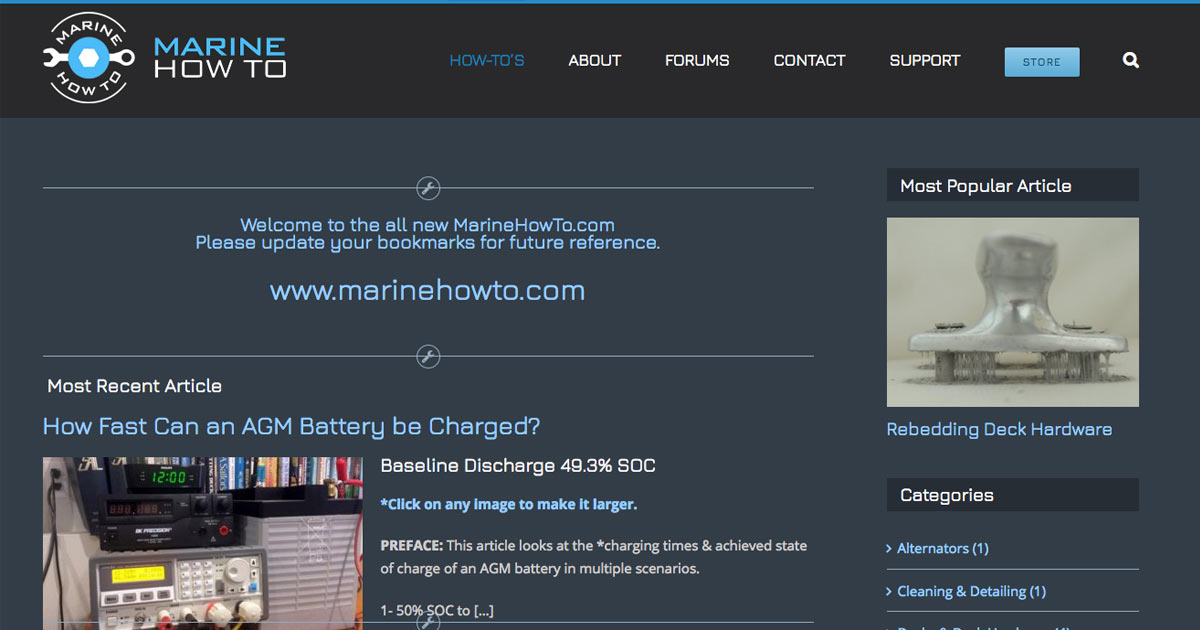jssailem
SBO Weather and Forecasting Forum Jim & John
- Oct 22, 2014
- 23,794
Perhaps removing the "motor" or, if you feel you need to identify it in the diagram, label it as an OUTBOARD. It is really no different than a light bulb to your system. The rest of the graphic speaks to "Charging Sources".
As you are planning to use an AC source to help charge your batteries (the "Charger") then you need to understand galvanic isolation and the proper way to "Ground" a charger on a boat. Reading MaineSail you will see that the "Typical Battery Charger" used in the automotive world will kill boat batteries and provides an opportunity "an electrical hazard on a boat". They just are not UL approved for boats.
The charger is connected directly to both batteries independently.
This tells me that the out put of the charger is providing DC power to the batteries.
The charger is not connected to the panel or shore power system. It must be plugged in separately. (for now I'm thinking that I will plug this into an outlet so I can use the shore power plug for charging when needed)
Does this mean you run an extension cord from a 110 source on shore to the boat and then plug the charger in to the end of the cord? Deciding to use the "Shore Power Plug" raises questions. It appears in your diagram the Shore Power plug is connected to the 1/2/B plug. This would mix AC and DC power in the boat. That is a big NO NO NO NO.... I am guessing it is not but if my guess is wrong it should be corrected before fire or electrocution occurs.
* I do need to use the 1/2/All switch to use the house lights and various accessories.
This switch is a way of turning on or off the DC systems in your boat. Since you use an outboard and there is no alternator involved providing power to the batteries through the switch it's use for DC only power is fine.
* Shore power works for the 110 outlets when plugged in.
Lets identify "Shore Power" as AC power. That way you recognize the difference and you keep the systems TOTALLY SEPARATE. Like water and electricity do not mix or play well. AC and DC power are cousins that work best when they are on different planets.
As you are planning to use an AC source to help charge your batteries (the "Charger") then you need to understand galvanic isolation and the proper way to "Ground" a charger on a boat. Reading MaineSail you will see that the "Typical Battery Charger" used in the automotive world will kill boat batteries and provides an opportunity "an electrical hazard on a boat". They just are not UL approved for boats.
The charger is connected directly to both batteries independently.
This tells me that the out put of the charger is providing DC power to the batteries.
The charger is not connected to the panel or shore power system. It must be plugged in separately. (for now I'm thinking that I will plug this into an outlet so I can use the shore power plug for charging when needed)
Does this mean you run an extension cord from a 110 source on shore to the boat and then plug the charger in to the end of the cord? Deciding to use the "Shore Power Plug" raises questions. It appears in your diagram the Shore Power plug is connected to the 1/2/B plug. This would mix AC and DC power in the boat. That is a big NO NO NO NO.... I am guessing it is not but if my guess is wrong it should be corrected before fire or electrocution occurs.
* I do need to use the 1/2/All switch to use the house lights and various accessories.
This switch is a way of turning on or off the DC systems in your boat. Since you use an outboard and there is no alternator involved providing power to the batteries through the switch it's use for DC only power is fine.
* Shore power works for the 110 outlets when plugged in.
Lets identify "Shore Power" as AC power. That way you recognize the difference and you keep the systems TOTALLY SEPARATE. Like water and electricity do not mix or play well. AC and DC power are cousins that work best when they are on different planets.

